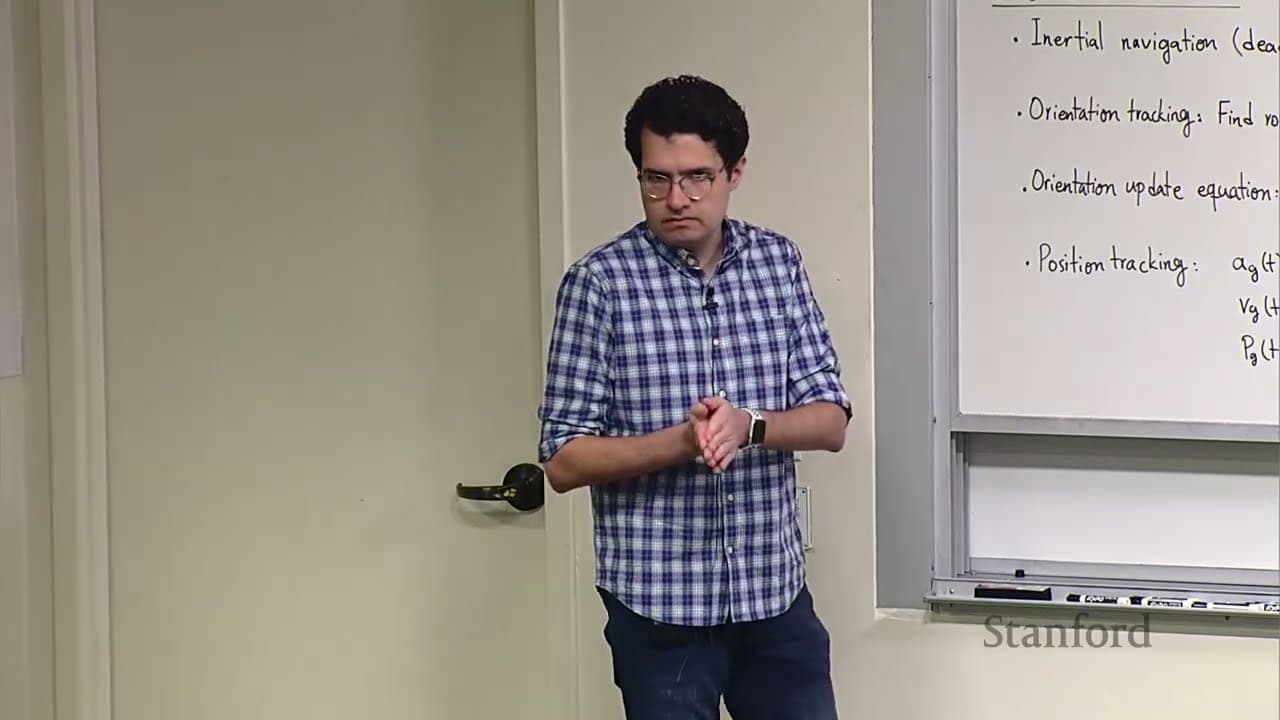Stanford EE259 I Sonar ranging and bearing angle estimation I 2023 I Lecture 9
24 Jan 2024 (over 1 year ago)

Summary of Video Content
- The video discusses inertial navigation and the need for a geometric transformation to map measurements from the body reference frame to the global frame.
- Orientation tracking and position tracking are introduced, involving finding rotation matrices and integrating accelerometer measurements.
- The limitations of pure inertial localization due to drift are highlighted.
- Sensors used for mapping are discussed, including sonar, radar, lidar, and cameras.
- The principle of operation and performance metrics such as range, resolution, field of view, and measurement rate are explained for each sensor.
- The physics of acoustic waves and their behavior are delved into, covering the wave equation, speed of sound, and propagation in different materials.
- The dependence of sound velocity on material properties like density, temperature, and humidity is mentioned.
- The attenuation of acoustic waves and its impact on range and resolution of sonar sensors is discussed.
- The Huygens-Fresnel principle and its application to acoustic waves are explained.
- The concept of far field and beam patterns, including main lobe and side lobes of the radiation pattern, are showcased.
- The trade-off between frequency, range, and angular resolution is highlighted.
- Beamforming and the Fourier transform of circular apertures are introduced.
- The far-field beam pattern and its dependence on aperture size and frequency are explained.
- The trade-off between aperture size and frequency for improving resolution or range is summarized.
Introduction to Transducers
- Emitters used in sonar sensing can also operate as receivers.
- Transducers can transmit and receive sound waves.
- The sensitivity pattern of a receiver to echoes is governed by the same beam pattern as the transmitter.
- The gain factor of the transducer determines how much echo energy is captured.
- The echo amplitude received from a target depends on the transmitted acoustic wave, the fraction of the wave that is reflected, the distance to the target, the sensitivity of the receiver, and the gain of the transducer.
Calculation of Received Echo
- The echo received at the receiver is determined by the transmitted wave, the fraction reflected, the distance to the target, the receiver sensitivity, and the transducer gain.
- The echo amplitude is linearly dependent on frequency and proportional to the fourth power of the transducer radius.
- The angle dependency of the echo is represented by a square of a bezel function.
Conclusion
- The physics of the echo for a given circular disk aperture and a target at a specific range and angle have been solved.
- The received echo can be processed further for ranging, bearing estimation, and mapping purposes.
- A transducer alternates between transmitting and listening to avoid interference.